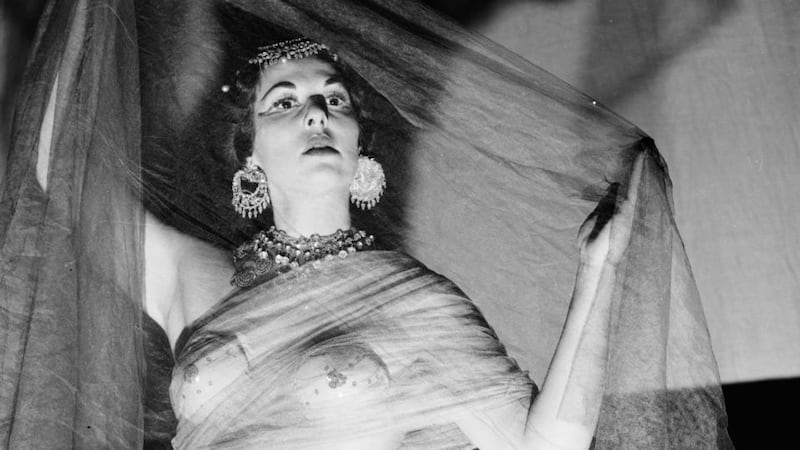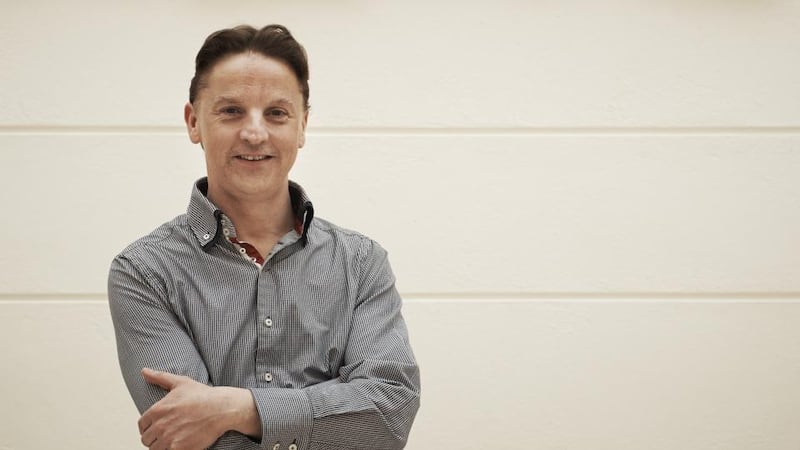When David Bolger of CoisCéim Dance Theatre started making a dance about the late actor and singer Agnes Bernelle he didn't quite know what kind of piece he wanted to create. But he knew what he didn't want to create. It wouldn't be a sentimental tribute, a gala celebration of her artistic achievements or a biochoreography reflecting her extraordinary life. Instead he wanted to find a way to embody her recordings of bitter-sweet songs about life and its trials.
"I felt a strong need to articulate them physically," he says. "And I wanted to offer a performance space for Agnes to come back to her spiritual home at Project Arts Centre. "
Bernelle, who died 15 years ago, was a creative director and long-time board member of Project and performed many times at the Temple Bar venue. Her life was truly extraordinary. She had an affluent childhood in Berlin, where her father was a theatrical impresario. Then, at the age of 13, she fled to London to escape the Nazis. During the second World War she broadcast as "Vicky" on a black-propaganda radio station, sending morale-sapping misinformation to German troops. She was also the first actor to perform Salome fully nude in the West End of London.


She moved to Ireland when she married Desmond Leslie (who punched Bernard Levin on live television after he wrote a bad review of Savagery and Delight , Bernelle's first solo show, based on songs by Kurt Weill and Bertolt Brecht). After their marriage broke up she moved to Dublin, where she was active in the alternative arts scene and social movements.
“Even now I’m discovering more and more Agnes stories,” says Bolger. “The other day I learned that she entered her dog Phoebe in the Alternative Miss Ireland contest.” Phoebe came third – the only dog to ever receive such an honour.
The real Agnes Bernelle
Discovering the "real" Agnes Bernelle behind the events of such a dramatic life would seem almost impossible, but Bolger had a close relationship with her. She was his (and this writer's) neighbour, and gave him early encouragement when he took an interest in dance and drama, taking him to shows at Project and driving him to Saturday-afternoon drama classes.
He vividly remembers her house, with its classy black-and-white tiles, wind-up telephone and gilded mirror propped against a wall. He also hasn’t forgotten, on her desk, a white leather-bound album full of photographs of her life and career.
"It was only when I flicked through that album, with photos of her as a child, on film sets or about to go on stage in Salome , that I first realised how unique she was. Her son Mark sent me some images that I remember seeing in that book. They took me right back to that sense of discovery I first had about her life and career."
One of Bolger's early choreographic successes was Reel Luck , a sideswiping look at Irish society that took Éamon de Valera's "comely maidens" speech as a springboard. "Agnes loved it and told me how wonderful it was to see satirical dance."
In the same way that any smiles in Bernelle’s songs normally hid clenched teeth, the outward effervescence of Bolger’s choreography tends to mask an interior darkness. “I suppose that is one way that Agnes’s artistic sensibilities have influenced me,” he says.
One of the most striking aspects of watching rehearsals for Agnes is the extent to which Bolger has embodied the songs. As he directs the cast he not only knows every word, breath and phrase in each song but has also constructed movement patterns that are just as finely detailed.
“I want the dancers to become the music and find a way to understand the songs in the physical realm,” he says.
The result isn’t a slavish physical depiction of the music, in which every note has a corresponding move (a technique that choreographers often describe as “Mickey Mousing”).
“Sometimes we’ve choreographed to a song and then taken the song away, and perform it in silence,” he says. “In a way the composer, and particularly Agnes’s interpretation of the song, becomes the choreographer.”
For most Dubliners in the 1980s, “cabaret” meant jigs’n’reels at Jurys Hotel rather than the artistic underworld of Weimar Germany. Bernelle was always meticulously authentic in her performances, nevertheless. Like the best interpreters of German cabaret songs, her renditions were based on the honesty of her voice rather than on its beauty. “The drama is always there. A snatched breath or going slightly off key is always done for dramatic effect.”
Tom Waits
As well as three solo albums, Bernelle recorded with Tom Waits, Elvis Costello and Marc Almond, among others, and she influenced many alternative artists around the then ungentrified Temple Bar area. Even if they hadn't seen her perform, lots of people still knew who she was.
“Since I’ve started making this piece, so many people have come forward to tell me about how they knew her. They all have their own private Agnes story, and ownership of those memories is really important to them.”
Agnes
opens at Project
Arts Centre, Dublin, today and runs until next Saturday
; a series of talks, screenings and photographic exhibitions will run parallel to the performances












